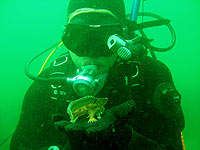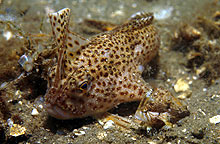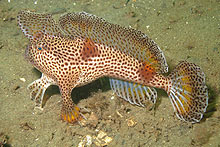Once commonly seen by divers within their range, the cause for their rapid decline in numbers in the late 1980s/early 1990s is thought to be related to the invasion of their habitat by the northern Pacific seastar (Asterias amurensis). These seastars are believed to have been introduced to the Derwent via ships ballast in the 1980s and their subsequent population explosion coincides with the decline of the spotted handfish.
Northern Pacific seastars are known to prey on the stalked ascidians which the handfish lay their eggs around, thereby reducing suitable spawning locations. The seastars may also prey directly on the egg masses of the spotted handfish.
Added to this, increased soil run off from the land has resulted in a build up of silt in the Derwent Estuary and thus reduced the amount of suitable habitat for the spotted handfish. Contamination of the Derwent by urban runoff and heavy metals from local industries could also impact negatively on the handfish. |




